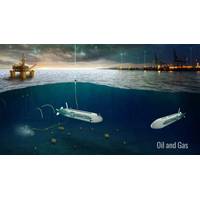
Scottish Subsea Robotics Firm Gets Seven-Figure Investment Boost
offshore repair and inspection work through its fleet of autonomous, all-electric submarines.Namely, the company aims to capture a 20% global market share within the next decade using a fleet of its Loggerhead submarine systems.Loggerhead deploys ROVs from a mothership submarine once it arrives at a work site, such as a wind farm or oil field, with the vehicles controlled by operators safely onshore from a control room, all while harnessing advanced communications technology and AI.As well as reducing costs, the system is said to be able to replace heavily crewed vessels, which typically run on diesel
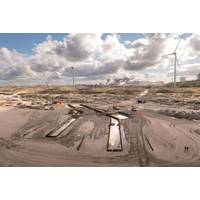
Hollandse Kust West Beta Export Cables to Come Ashore Next Week
days to facilitate the installation of two electricity export cables.Following the onshore drilling operations, the conduits for the electricity cables are already in place. The first cable will be brought from the sea to the beach from the Giant 7 installation barge next week.A 200-ton winch on the work site has already been placed on the beach that, in addition to the cable, also pulls the cable burying machine.“After the cable has been brought ashore, it will be pulled into the empty sleeve with a winch, which is located behind the dunes in the Sculpture Park. In the Sculpture Park, the three
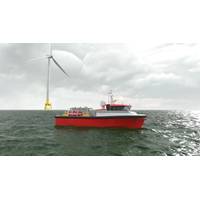
Tech File: Smartgyro Stabilization for Diverse Marine’s Hydronaut Vessels
for Q1 2023, with the remainder being fulfilled by the end of 2024.An autonomous UAV deployment daughter craft, Hydronaut’s primary objective is to support the launch, recovery and real-time operations of Aquanaut, its undersea robotic counterpart. Hydronaut ferries Aquanaut to and from the worksite and supports battery recharges as well as the communications link from the local remote operations center for supervised autonomous operations. Nauticus’ Houston-based global remote operations center provides additional technical and operational support.The SG80 is suitable for vessels over

Nauticus Fleet: Robotic Surface, Subsea Fleet Launched
improving the bottom line for our clients.”The surface aspect of the fleet is Hydronaut, an 18-meter optionally crewed autonomous surface vessel (ASV) that supports the launch, recovery and real-time operations of Aquanaut, its undersea robotic counterpart. Hydronaut ferries Aquanaut to and from the worksite and supports battery recharges and the communications link from the local remote operations center for supervised autonomous operations. Additional technical and operational support can be provided from Nauticus’ Houston-based global remote operations center.Aquanaut is a fully electric

Oceaneering, BP Remotely Pilot ROV in UK from Shore in Norway
operation ran from July 20 to August 5, 2021."ROV remote piloting from shore can increase safety and reduce the environmental footprint of operations, potentially achieving up to 25% reduction in offshore personnel on board (POB) and provide a significant reduction in emissions associated with the work," Oceaneering siad."Oceaneering and bp worked together to ensure secure offshore connectivity for the remote ROV piloting operations. This required a complex setup process to establish a bridge between the data networks of both companies, without compromising their respective cyber security
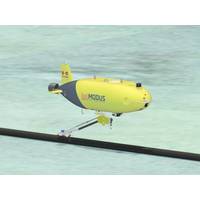
Subsea Vehicles: To Be (resident), or Not to Be?
single point lifted out of the water to the deck, using just a crane wire (anti-torsion).uLARSNorway’s uSEA is developing both a mid-water LARS for underwater intervention drones (UiDs, as Equinor called them) and a USV to deploy it and act as a shuttle service to take underwater vehicles between work sites. The 24m-long hybrid diesel-electric USV is being designed to support mid-water docking, charging and communications with UiDs or AUVs using uSEA’s uLARS, but also to be able to lift them up onto deck, via a handling system through a moonpool, so that, up to four could be hosted by one USV
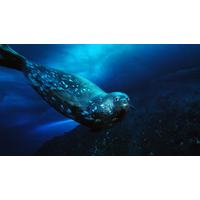
New Recordings of Ultrasonic Seal Calls Hint at Sonar-like Abilities
, equipment, fins and over 40 pounds of lead to counteract all that added buoyancy.I do a final check with my dive buddies: Air? Hoses? Weights? Then, one by one, we put in our mouthpieces, plop into the hole and sink out of sight into the dark.As we frog-kick along, following our lights toward the work site, a Weddell seal glides by with a few effortless undulations. It glances sideways at us a couple of times, as if doing a double-take.In contrast to us awkward, gear-laden human divers, Weddell seals are completely at home under the ice. They can hold their breath for over 80 minutes and dive to
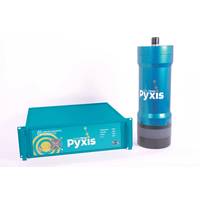
Applied Acoustic Launches New Subsea Positioning System
and long-range positioning system to date, and in the process providing many time, cost and performance benefits to global survey operators," AAE said in a statement on Tuesday."Pyxis USBL is a portable, calibration-free system able to immediately operate from any vessel as soon as the work site has been reached. The MEMS-based INS does not fall under ITAR regulations, and the range-restricted option means the whole system can be shipped unhindered and without export control to almost anywhere in the world. A feature of the Pyxis system is the ability for the operator to deactivate
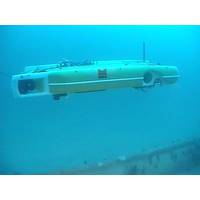
Hybrid AUV Completes Depth of Burial Survey for Offshore Wind Farm
Vehicle) .The Gwynt-y-Môr Offshore Wind Farm comprises 160 Siemens 3.6MW WTGs located approximately 8 miles from the North Wales coast in Liverpool Bay in water depths ranging between 12m and 28m. The WTG’s are connected by 161 inter array cables which total circa 147km in length. The worksite is known for high subsea currents, so any solution had to cope with current up to 2kts.Modus mobilized its HAUV-2 system, equipped with Optimal Ranging Orion Cable Tracking System and dual head R2Sonic 2024 Multibeam Echosounder, on the chartered DP2 vessel “Noordhoek Pathfinder”.
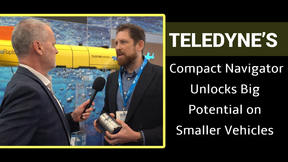
 February 2025
February 2025





